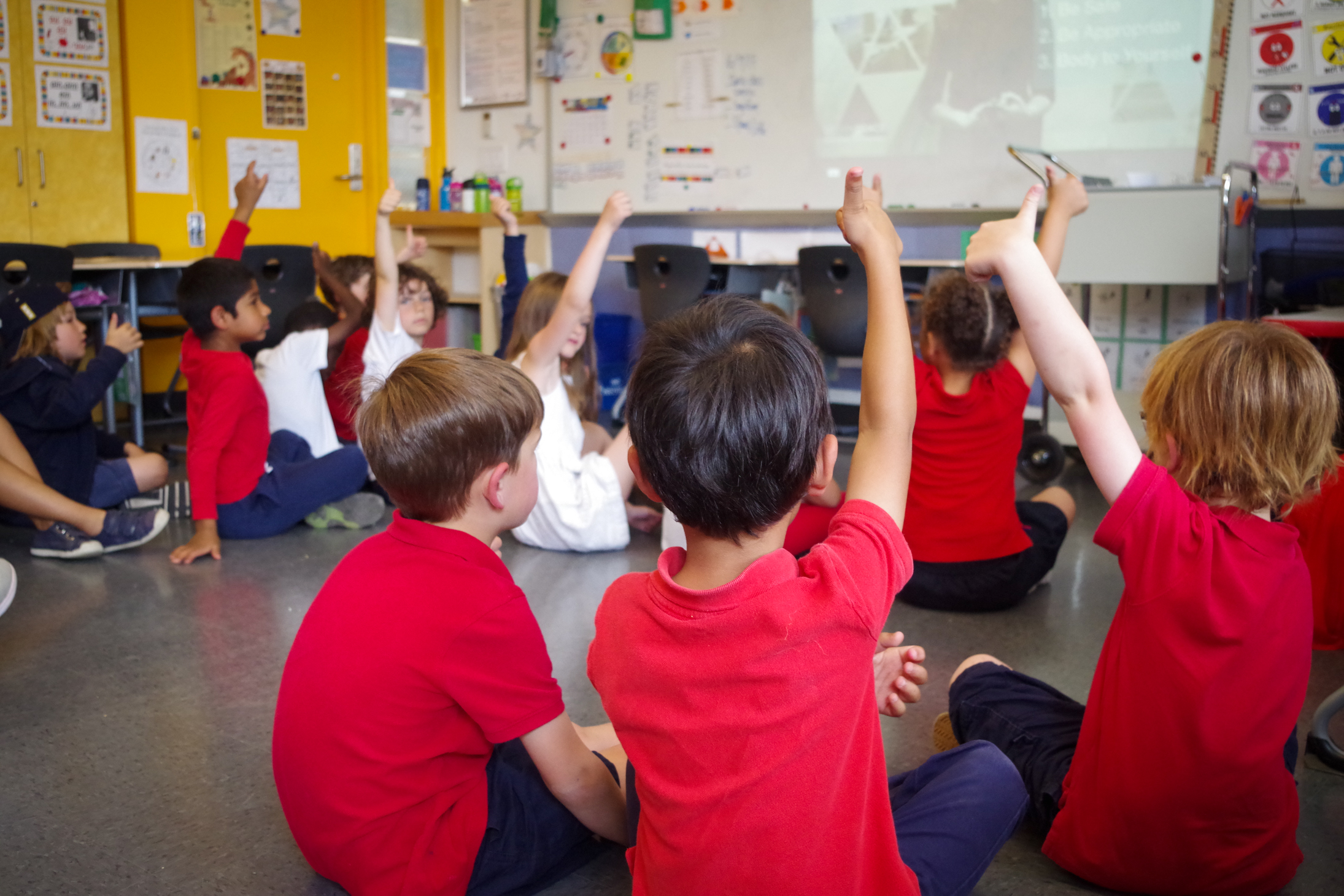



Designing Healthy Classrooms
professional development designed to make your students happier, healthier, and more successful
Designing Healthy Classrooms
professional development designed to make your students happier, healthier, and more successful
Back in 2008, we set out to make the arts more accessible for schools and families through community dance education. Fundamentally we believed that making schools more creative had the power to develop stronger, more innovative adults.
What we’ve learned after working with over 2000 students annually through 300+ PK-12 classrooms is that dance education has even more power than we thought it did when we started 11 years ago: in addition to building creativity, dance education is a highly effective framework for social-emotional learning. This means that the classrooms that include dance set students up for success in nearly every area of their lives.

Why SEL?
Social-Emotional Learning (SEL) is a framework for educating students in self-awareness, self-management, social awareness, relationship skills, and responsible decision making. SEL is crucial for teaching healthy conflict management and countless studies have shown the direct link between social-emotional wellness and academic performance including college readiness, graduation rates, and test scores. Following an initiative to increase in SEL resources and education in the classroom, Chicago Public Schools found a 65% decrease in suspensions (44,000 students) in 2016 alone.
Why SEL?
Social-Emotional Learning (SEL) is a framework for educating students in self-awareness, self-management, social awareness, relationship skills, and responsible decision making. SEL is crucial for teaching healthy conflict management and countless studies have shown the direct link between social-emotional wellness and academic performance including college readiness, graduation rates, and test scores. Following an initiative to increase in SEL resources and education in the classroom, Chicago Public Schools found a 65% decrease in suspensions (44,000 students) in 2016 alone.
Our Theory of Change
We believe that when we incorporate social-emotional learning in all classrooms, we not only set our students up for success in the short term, we help to build a society of adult citizens who act with empathy, integrity, and grit.
A 1999 study by the Center for the Study of Teaching and Policy found that "the effects of well-prepared teachers on student achievement can be stronger than the influences of student background factors, such as poverty, language background, and minority status”.
In addition to continuing to expand our in-school program, we decided to use our extensive experience in the classroom to develop a training that equips all teachers with the resources to incorporate SEL in their classroom every day using movement, guided breath, and yoga.

Our Approach
We’ve all attended professional development where we’ve learned great ideas that were quickly forgotten once we returned to work. A 2000 study in Learning Forward reports that "one-shot" workshops are ineffective (Murphy). That’s why our framework allows for more than a one-time training. Through guided teacher cohorts, online course videos, and peer coaching, the Designing Healthy Classrooms Professional Learning framework is structured to set your school up for long term success.
Our Approach
We’ve all attended professional development where we’ve learned great ideas that were quickly forgotten once we returned to work. A 2000 study in Learning Forward reports that "one-shot" workshops are ineffective (Murphy). That’s why our framework allows for more than a one-time training. Through guided teacher cohorts, online course videos, and peer coaching, the Designing Healthy Classrooms Professional Learning framework is structured to set your school up for long term success.
Step One: Workshops
These two hour workshops empower K-3 teachers with concrete, actionable techniques that use movement to address crucial social-emotional learning objectives. We’ll teach your team how to use dance to address four common problems young students face in class:
Fidgeting - The act of moving about restlessly, often with small movements, especially with the hands and feet. It may be the result of nervousness, agitation, boredom, or a combination of these.
Building Kindness with Others - Building awareness, empathy, and compassion in the classroom and beyond.
Fatigue - Tiredness or low energy that may affect learning.
Talking - Chatter and talking among students that is off-task or disruptive to learning environment.
Dance + SEL Professional Development Includes:
two-hour workshop for K-12 teachers covering a variety of daily dance activities and techniques for implementing in the classroom
